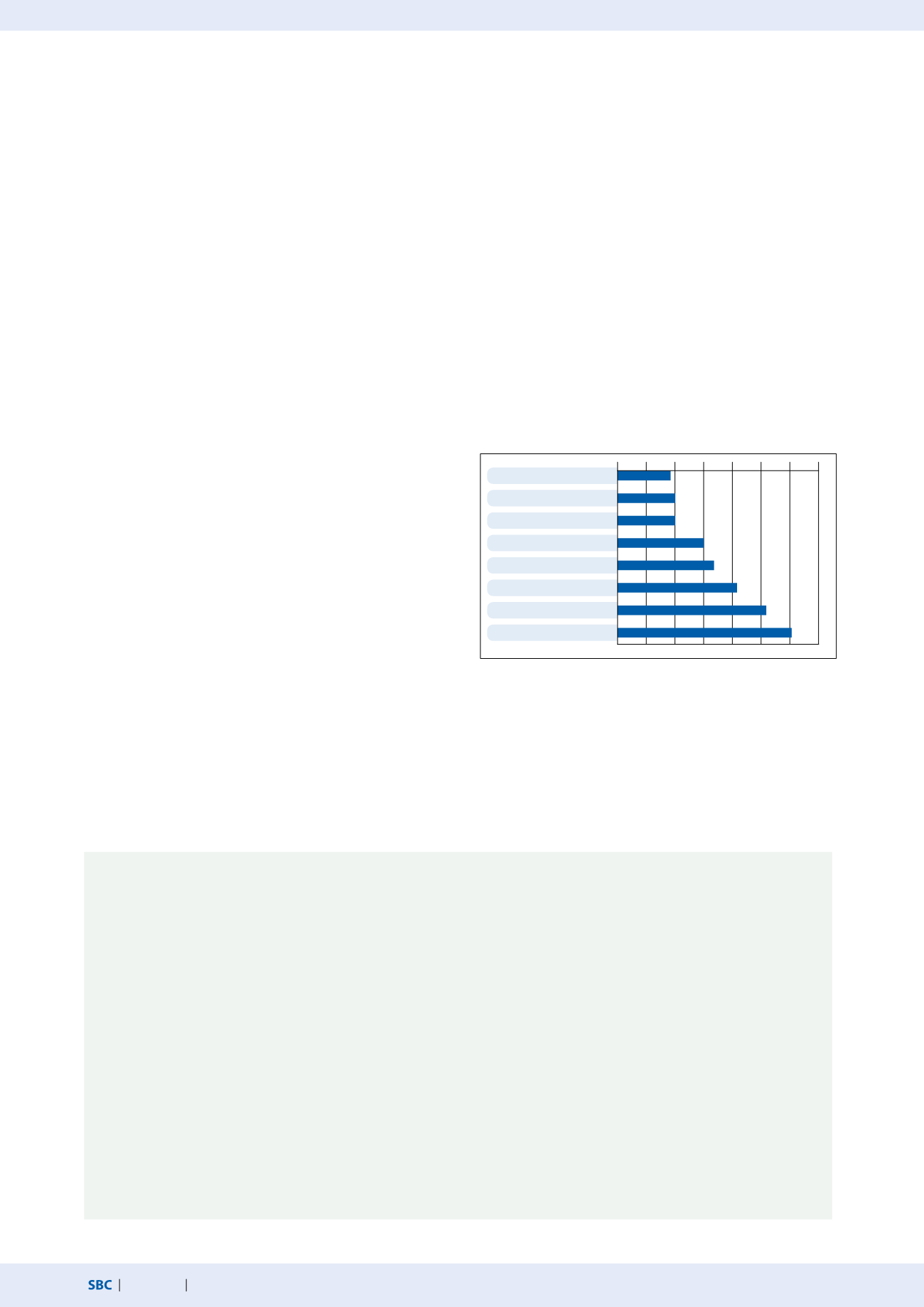
262
saia-pcd.com
9%
10%
10%
15%
17%
21%
26%
31%
0% 5% 10% 15% 20% 25% 30% 35%
Room automation
Save building operating costs, lower CO
2
emissions and increase user comfort
The objective is to maintain a comfortable interior temperature for the user, which should be achieved by consuming a minimal amount of
energy. The optimisation potential of occupancy and changes of use can therefore be exploited. Energy efficiency and conserving resourc-
es will become increasingly important in the future and play a decisive role in the implementation of projects. New standards, regulations
and laws are constantly being introduced to increase awareness of this.
4.1
Objectives of room automation
The existing potential is also demonstrated through a study by
the University of Hannover for Applied Science and Art. In air-
conditioning technology, energy savings of over 30% can be
achieved and this figure rises to 60% for lighting. Further investi-
gations and studies also demonstrate an immense potential for
savings.
Standards and regulations
The challenges of changing energy policies and increasingly
strict CO
2
constraints have resulted in new guidelines. One
example is the EPBD, which stipulates the improvement of
the overall energy efficiency of new buildings.
European Energy
Performance of Buildings Directive – EPBD
The latest European Directives (2010/31/EU and 2012/27/EU)
required Member States to introduce, implement and moni-
tor the quality of building energy efficiency in various areas.
The guidelines include a method of calculating overall ener-
gy efficiency. Calculation of the energy requirement with ad-
ditional specifications for heating, ventilation, cooling and
electrical energy.
Extract: Technical building systems, such as heating systems,
warmwater systems, air-conditioning and large ventilation
systems, must meet the requirements for overall energy effici-
ency, regardless of whether they involve new systems or the
replacement or modernisation of such systems.
Certain regulations and recommendations exist for room
automation in various countries. A brief extract:
– DIN EN 15232 “Energy Performance of Buildings: Impact
of Building Automation and Building Management”
– VDI 3813-1 “Fundamentals of Room Control”
– DIN V 18599 “Energy Efficiency of Buildings”
– EnEV Energy Saving Regulation
This topic is described in greater detail based on the
following example.
Objectives of room automation
Ensure a reasonable level of comfort during occupancy
Cut the cost of energy required for operation
Protect the environment and conserve energy resources
A crucial factor here is monitoring, and the user's ability to
intervene.
Comfort with room automation
We spend most of our time in closed rooms. This is why the
quality of the temperature and conditions in the room is vi-
tal for our health and wellbeing and, for functional buil-
dings, the environment also influences productivity at work.
In this case, the factors are influenced by various services.
These are, for example, the HVAC services (pleasant room
temperature and good air quality) and the electrical services
(e.g. light for sufficient brightness or blinds to prevent glare,
the effects of daylight and thermal radiation). An interdisci-
plinary cooperation of various services and plants is requi-
red to control these influencing factors. This can be achie-
ved using cross-plant automation functions and the
appropriate components.
Energy and room automation
The building sector accounts for 40% of overall energy con-
sumption in the European Union (EU). Of this, 85% is for
room heating and cooling and 15% for electrical energy
(particularly lighting).
There is enormous potential for energy optimisation here.
Building automation plays a decisive role in this, along with
thermal isolation and the use of energy-efficient devices.
The complete networking of heating, cooling, ventilation, ligh-
ting, shade and additional systems make the building intelli-
gent. This is the key to energy efficiency and optimises the
operating costs of a building. The operating phase of a buil-
ding is crucial, as 80% of the service life costs are accumulated
in the operating phase. 50% of this figure is energy costs that
could be reduced with intelligent building automation.
Operating costs per annum in % of the construction costs
Source:HelbingStudy
Administration building
Production building
Traffic facilities
Open-air swimming pools
Indoor sports centres
Indoor swimming pools
Hospitals
Schools / Nursery schools


